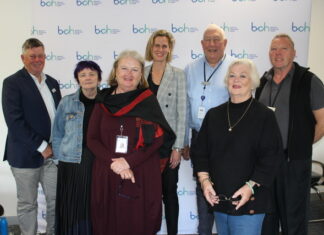Geelong needs to act now to avoid major transport issues in the future, according to the G21 Geelong Regional Alliance’s recently-released Region Transport Strategy.
As Victoria’s fastest growing area, the Geelong-G21 region is facing a five-fold increase in road congestion by 2041 if significant investment is not made in the region’s transport networks.
The key message from the G21’s report is the region needs to reduce its over-reliance on car travel and invest in public and active transport connections to avoid choking Geelong’s roads with over 100,000 extra cars.
G21 chief executive Giulia Baggio said the strategy’s modelling showed a business-as-usual approach to transport planning would prove disastrous for the region.
“We are such a fast-growing region that very quickly we’re going to find that our roads are extremely congested and it’s going to be very difficult to move around; people are already feeling that,” Ms Baggio said.
“We’re a very car-dependent region, one of the most car-dependent in Victoria, and with the population growth rocketing ahead, as it has done since 2015, we need to develop other modes of transport to take the pressure off our roads and to retain the livability of the region.”
According to the strategy the region needs a public transport network with extended services of increased frequency, inclusive design standards for active (cycle and pedestrian) travel and support for electric vehicles.
Other recommended priorities include reducing the emissions of bus and rail networks to zero, new train stations at Bannockburn, Moorabool, Bell Post Hill, Gheringhap and Avalon, and a rapid transit connection between Torquay and Geelong.
G21 deputy chair and Surf Coast Shire mayor Liz Pattison said the strategy laid the foundation for a sustainable transport network.
“From frequent, rapid public transport along the Geelong-Torquay corridor, to a regular Geelong-Colac rail shuttle service via Winchelsea, we’re pleased to see increased public transport feature as priority projects to meet the strong demand and to help drive our region’s visitor economy,” she said.
Ms Baggio said the three levels of government – local, state and federal – must come together to deliver the infrastructure Geelong needs.
“We have rapid growth, we can’t ignore the fact, but we have to manage it well,” she said.
“But having proactive strategies means that we’re intelligently thinking about how to grow the region.”






